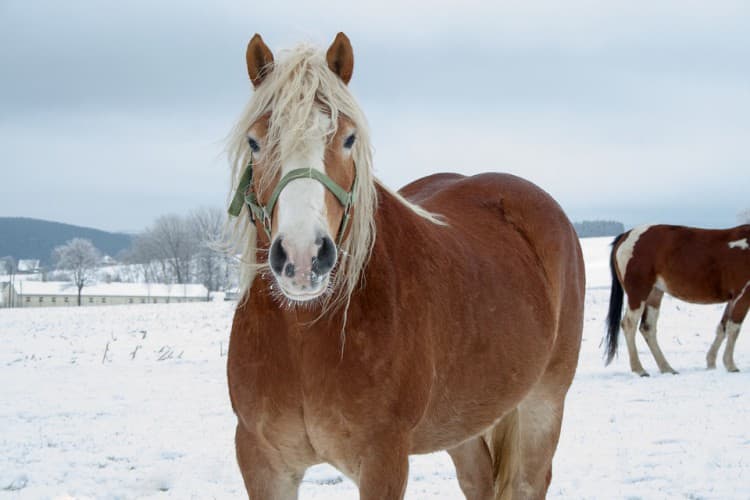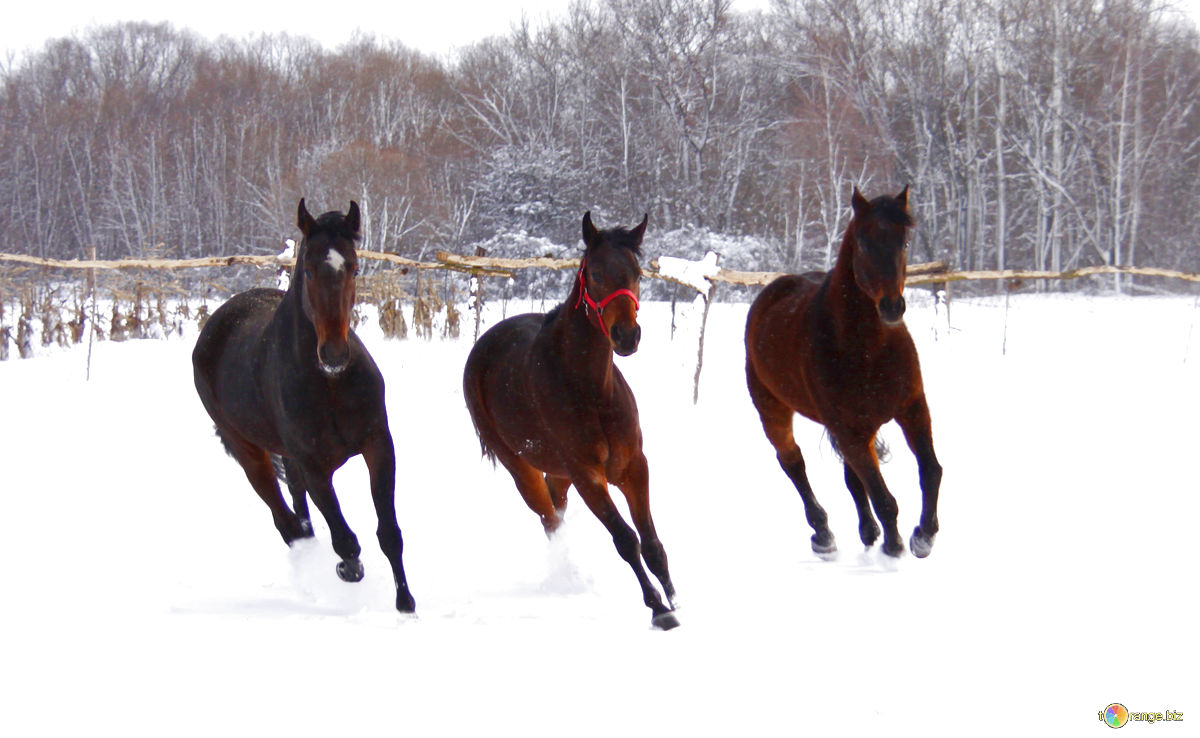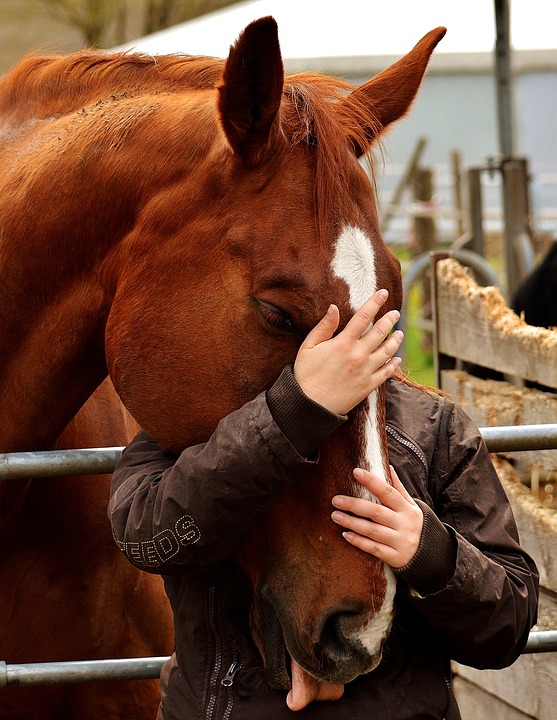
Once Mother Nature clothes your majestic beast with a winter coat it becomes harder to recognise wounds and skin infections. As days grow shorter, their coat gets thicker and longer. For your majestic beast, it is an amazing protective device. But if you’re planning to continue training throughout the winter, a heavy coat means loads of extra work. It will start taking more time to cool down your horse even after the shortest workout. Cold temperatures and longer coats can complicate grooming this time of year.
There’s no rocket science involved when it comes to horse grooming, but it always does one good to know a few basic tips and tricks to get good results. It’s surprising how some simple tricks can make grooming an enjoyable experience for you and your horse.
Convenient Currying
Currying loosens dirt, massages the skin and distributes natural oils. A currycomb with long “fingers” can reach through a long winter coat better than a traditional curry with oval rings of short teeth.Cheap curry combs that are usually made of plastic create micro abrasions on the hair and strip the hair of its natural oil coating. It creates micro scratches on horse’s skin which leaves them prone to skin infections and damage hair follicles.
Once the debris and dirt are loosened you can vacuum away. A grooming vacuum can easily help pull dust and dirt off from a thick winter coat. If you’ve never used a vacuum on your horse before, take some time to acclimate him to the sight, sound and sensation of the vacuum.
Slightly trim the long hair on a horse’s pasterns. It not only gives a tidier appearance but can help keep the area cleaner and drier while also reducing the risk of scratches during wet winter weather. If your horse wears a tail bag, rinsing and reconditioning his tail before changing it becomes necessary. Doing this will help to prevent excessive hair breakage at the top of the bag. Grungy tails in winter are nothing new. To make it easier to clean them, saturate the hairs with silicone spray and separate them by hand. You can use water to bathe the bottom of the tail and below the bone, even during cold weather.

Cool down
How to cool down a sweaty horse on a cold day is a ceaseless post-ride grooming trouble during winters. It is quite vulnerable to catch a chill as a result of situations such as this. You’ll need to dry him off while still keeping him warm.
Here are some options to help you through:
- To dry the coat quicker, cover him with a cooler and stuff handfuls of straw underneath. The straw provides loft that allows air, warmed by body heat to circulate which in turn helps to cool down heat faster while keeping the body warm
- Use footing to soak up moisture from the coat. Let the horse roll in clean, dry sawdust or the footing of an indoor arena, then brush the debris off. It will not only soak up moisture from the coat, but also take care of the itchiness that drying sweat can create.
- Use a grooming vacuum with a “reverse” feature to literally blow- dry the coat. Rub the coat with a towel as you go along as it speeds up the process. As you do so, just be careful not to blow dirt or debris into the horse’s face.
Clip The Coat
One way to cope with a winter coat is to clip it off. During the winter season, we have two basic concerns when your horse is unclipped; the first is dirt, bacteria, fungi, moisture etc. that gets trapped on the skin by a coat and the other would be cooling out an unclipped horse.It is a huge task to cool out and dry your horse after exercise to avoid skin funk that too without getting your horse chilled to the bone. An unclipped coat is a great natural barrier to the elements. There are also probabilities of exposure to skin funk, rashes, infections, rain rot, and unseen cuts and scrapes. In addition this, moisture from sweat would create a buffet for microscopic creatures to invade.
Your riding habits and climate in the winter will likely determine the need to clip. Most of the time, a horse can and will grow its own coat to shield itself from the elements, including rain and wind. When this dense hair combines with the tiny muscles in the skin that make the hair stand on end, it creates a warm layer of air and insulation. This allows snow and sometimes even ice to form on the coat without the skin even experiencing it.
When this delicate hair/air/warmth balance is disturbed the consequences are harsh. A wet coat from rain will rarely cause a chill for your horse because the water rarely reaches the air pocket layer and the skin. The problem would be sweating as sweat forms on the outer part of the skin, and is more likely to cause a chill. Wet horses are said to lose body heat 20x as fast as a dry horse. The cold winter is only going to worsen this. A recent study from Sweden suggests that unclipped horses who exercise are more likely to overheat and have a higher maximum respiratory rate.

Clipping Choices
Clipping will help you make your horse more comfortable during the winter season.There are diverse choices when it comes to clipping. It includes various factors to be considered such as options to clipping patterns.
The most convenient way to make winter grooming easier would be a full body clip. But that comes with a price as it adds to the chore of blanketing. Once you clip your horse, you must make sure he is blanketed according to the weather. A winter blanket at night is a must regardless of climate, although on warmer nights a thinner sheet might be in order, although on warmer nights a thinner sheet might be in order. For full-body clipping, you’ll need large shearing clippers as well as small clippers. Shearing clippers can clear a larger area at a lesser time, saving you time which otherwise would be long tedious hours spent.
A compromise is a partial clip, such as a trace. It removes hair only from areas of the horse that gets sweaty with work but leaves the rest for warmth.The small clippers are used for the face, ears, and small body parts and areas. However, trying to use these on the whole body will wear out the motor.
If you’re planning on clipping off that winter coat off your horse, here are some tips that will definitely come in handy.
- A full body clipped horse is easier to groom and easily cools out after winter exercise, but it’ll need blankets and/or sheets to avoid getting cold.
- Be ready with different sizes of clippers before starting the body clip job.
- If your horse is new to clippers, you can start with the smaller and quieter ones in detail areas. You can then move on to the larger, noisier body clippers.
- Brush the clipped hair out of the blades and lubricate them every five minutes or so to keep them cool and working efficiently.
- Choose a quiet location to do the clipping. A place where your horse will stay calm and you can concentrate and do a better job.
For enhanced results, you’ll need the best horse clippers. You’ll also need a blanket or cooler to keep the draft off newly clipped areas. Some white chalk for marking guidelines, a tail wrap, a body brushand clean rags, step stool to reach his head and ears, and a heavy-duty extension cord are essentials to make the clipping process more convenient.
Treat Your Horse to a Bath
Treat your horse to a weekly hand-wash if you have access to a draft-free area. Use a bucket of warm water and a dampened sponge to address one body section at a time. Use a towel to dry. I wouldn’t recommend this to people who live in below-freezing temperatures unless they have a heated barn.
Hot-towelling helps to get your horse cleaned deep down when it’s too cold. It’s just as simple as the steps mentioned below:
- Heat a large bucket of water
- While the water heats, curry and brush the horse thoroughly. Use a spot-removing grooming product to pre-treat grass and manure stains.
- Dunk a clean towel in the hot water and wring it out until it’s nearly dry.
- Rub the towel briskly against the grain of the hair. Work in small patches of the coat at a time and rotate to a clean area of the towel as it picks up dirt. Re-dunk and wring the towel again when it stops visibly steaming.
- You canspeed the drying process with a human hair dryer or by using overhead heat lamp. While you’re using a human hair dryer, remember to keep it moving in order to avoid burning your horse’s skin.
Maintain The Skin
Almost every winter skin condition is a result of a dirty hair coat, which gives bacteria and fungi a foothold. In order to keep your horse’s skin healthy, vigorously curry his body on a daily basis. Apart from lifting dirt and skin debris to the surface, it also enables you to feel any diminishment in the fat layer over its ribs, indicating weight loss, and any bumps or clumpy hair that could signal a wound or skin condition. Occasional skin problems aren’t new even for horses who receive the best of care. In most cases, horse skin troubles are minor. They usually require nothing more than a thorough cleansing and the application of a topical remedy. Nevertheless, these conditions will be generally itchy, annoying or even painful for your horses. So the more prompt you are in recognising and addressing them, the better for all concerned. When in doubt, don’t hesitate to call in your veterinarian for a diagnosis as well as guidance in treating the condition.
Gather up your horse grooming tools and products and make this winter a comfortable and a happy one for you and your horse.
